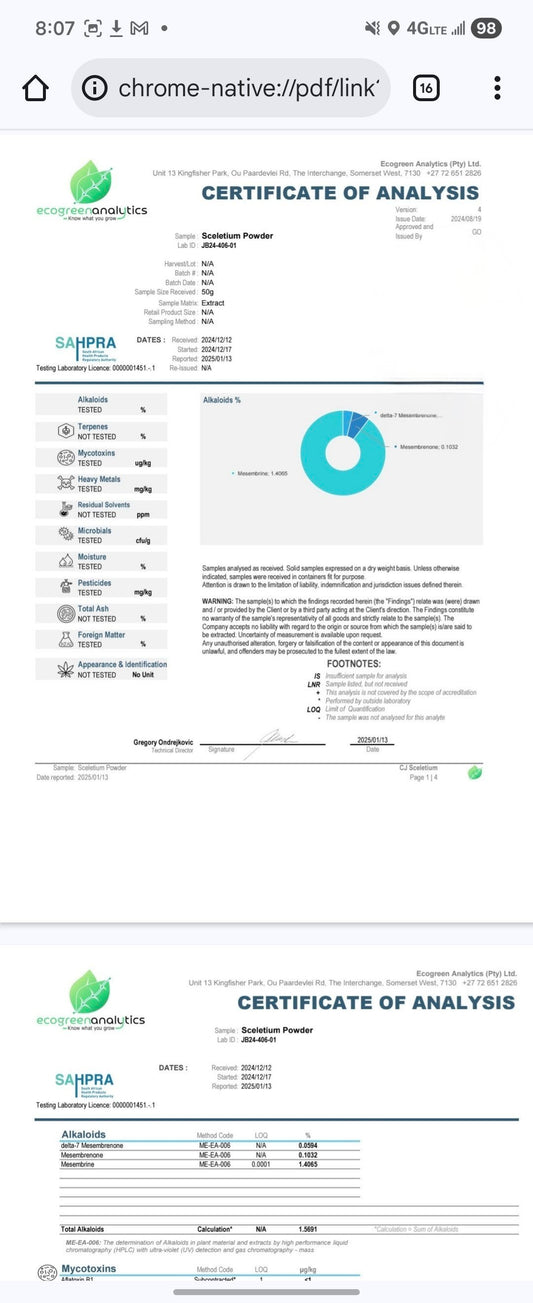-
Organic Oatstraw Powder
Regular price From $16.99Regular priceUnit price / per -
Jamaican Dogwood Bark
Regular price From $9.25Regular priceUnit price / per -
Fiji Kava High Potency (Medium Grind)
Regular price From $14.99Regular priceUnit price / per -
Chaga Chunks
Regular price From $9.99Regular priceUnit price / per -
Organic Ashwagandha Root
Regular price From $12.06Regular priceUnit price / per -
Bee Pollen – Nutrient-Packed Superfood
Regular price From $9.99Regular priceUnit price / per -
Blue Lotus with Stems
Regular price From $23.00Regular priceUnit price / per -
Organic St. Johns Wort Loose Leaf Tea
Regular price From $15.99Regular priceUnit price / per -
Organic Maca Root Powder
Regular price From $14.99Regular priceUnit price / per -
Organic Blue Vervain Loose Leaf Tea
Regular price From $14.59Regular priceUnit price / per -
1.5% Total Alkaloid Standardized Kanna Extract
Regular price From $6.99Regular priceUnit price / per -
White Willow Bark
Regular price From $11.25Regular priceUnit price / per -
Organic Wild Lettuce Loose Leaf Tea
Regular price From $14.99Regular priceUnit price / per -
Organic Chamomile Extract
Regular price From $16.99Regular priceUnit price / per -
Maca Root Whole Bulb / Root
Regular price From $14.99Regular priceUnit price / per -
Ashwagandha Whole Root (Organic)
Regular price From $9.99Regular priceUnit price / per -
Reishi (Ganoderma) Mushroom Powder
Regular price From $16.75Regular priceUnit price / per -
Red Ginseng Root Whole
Regular price From $15.99Regular priceUnit price / per -
Lemon Balm Leaf
Regular price From $13.44Regular priceUnit price / per -
Organic Hops Flower
Regular price From $15.81Regular priceUnit price / per -
Organic Catnip Loose Leaf Tea
Regular price From $7.99Regular priceUnit price / per -
Chaga Mushroom Powder
Regular price From $17.50Regular priceUnit price / per -
Akuamma Seed Whole
Regular price From $9.99Regular priceUnit price / per -
Lions Mane (Hericium erinaceus) Fruiting Body
Regular price From $9.99Regular priceUnit price / per


























